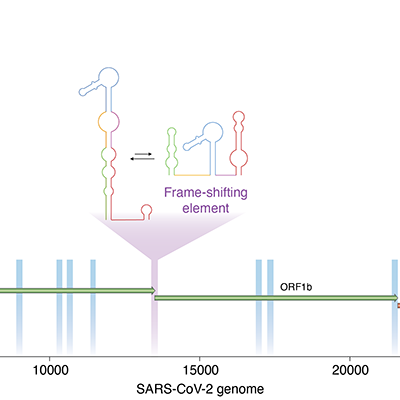April 28, 2022 -- Treatment resistance is a common issue for cancer-fighting drugs. Drug resistance can occur in a number of ways and identifying these routes can lead to new strategies to prolong survival. New research published on April 11 in Cancer Research has revealed a previously unknown mechanism in a common form of lung cancer that uses epigenetic regulation to avoid the effect of treatment.
Lung cancer is the biggest cancer killer in the U.S., causing over 130,000 deaths annually. About 85% of cases are a form known as non-small cell lung cancer (NSCLC), which is usually diagnosed once the cancer has spread to other parts of the body, and it is not possible to cure it through surgery.
However, advances in precision medicine have led to a range of drugs designed to target the particular genetic changes that drive the cancer's growth.
In 10% to 35% of cases of NSCLC, the gene epidermal growth factor receptor (EGFR) is activated due to mutations that cause the cells to grow uncontrollably. This can be targeted with drugs known as tyrosine kinase inhibitors, such as erlotinib, which are initially highly effective, but many patients develop resistance within a year.
In about half of these cases, this is due to another mutation in EGFR that allows cancer cells to keep working despite the treatment. In the remaining patients, it is not known exactly how the cancer becomes resistant. Without knowing how this happens, it will not be possible to prolong the effectiveness of treatment.
In the paper, researchers at Purdue University have identified that cancer can evade treatment by switching off an epigenetic regulator called KMT5C. In a screen of cancer cells, the team found that the loss of KMT5C could activate a cancer gene and restart growth.
KMT5C is a histone methyltransferase, so it is responsible for adding methyl groups to the histone proteins that package DNA. This allows it to control which portions of DNA are accessible and, therefore, which genes are active. This powerful ability presents an opportunity for the cancer cells to bypass the growth-limiting effect of treatment.
In the study, the scientists used the CRISPR-Cas9 gene-editing system to see the effects of removing each gene from a cancer cell line called EKVX that was grown in the presence of the antiEGFR drug erlotinib. If cells survived the treatment, it meant that the removed gene had increased their resistance to the drug.
After the experiment, the researchers sequenced the DNA of the surviving cells to see which genes were missing. They identified several known tumor suppressor genes, and KMT5C had the strongest effect of all. This is the first time that the loss of KMT5C has been shown to lead to erlotinib resistance.
"For the majority of genes that contribute to cancer, we're not sure how they work yet. And for many, we don't have a way to therapeutically target them," said Andrea Kasinski, PhD, a cell biologist at Purdue University, in a statement. "Research like this, that helps us understand how those genes work to determine cancer outcomes, adds to our understanding of the network. This knowledge will ultimately lead us to better therapeutics."
Gatekeeper of the genome
To confirm this result, the team studied another cell line and treated it with a chemical inhibitor of KMT5C. This made the cells resistant to both erlotinib and another cancer therapy, osimertinib. Loss of KMT5C activity also increased the activity of mesenchymal epithelial transition factor (MET), a gene commonly activated by cancer cells that become resistant to erlotinib.
Further analysis revealed that KMT5C is responsible for methylating histones near the DNA sequence for a long noncoding RNA that controls the transcription of MET. When KMT5C is active, this region of DNA is tightly packed due to histone methylation.
By contrast, when KMT5C is inhibited, this epigenetic regulation is relaxed and the DNA is open to transcription, meaning the long noncoding RNA is produced in higher amounts and the MET gene is activated.
Although the study identified this chain reaction of effects leading from KMT5C to MET, the researchers cautioned that there are likely to be other cancer genes that KMT5C also regulates. The team is now studying how other targets may contribute to treatment resistance, suggesting that KMT5C should be added to the list of "gatekeepers of the genome."
Copyright © 2022 scienceboard.net









